5. Digestive Systems in Farm Animals
In this presentation you will learn about 3 types of digestive system:
- Monogastric
- Ruminant
- Avian
By the end of the session you will understand:
- Monogastric digestive system and the digestive processes that happen in them.
- Ruminant digestive system
- A bird’s digestive system
1. Monogastric : The Pig’s Digestive System
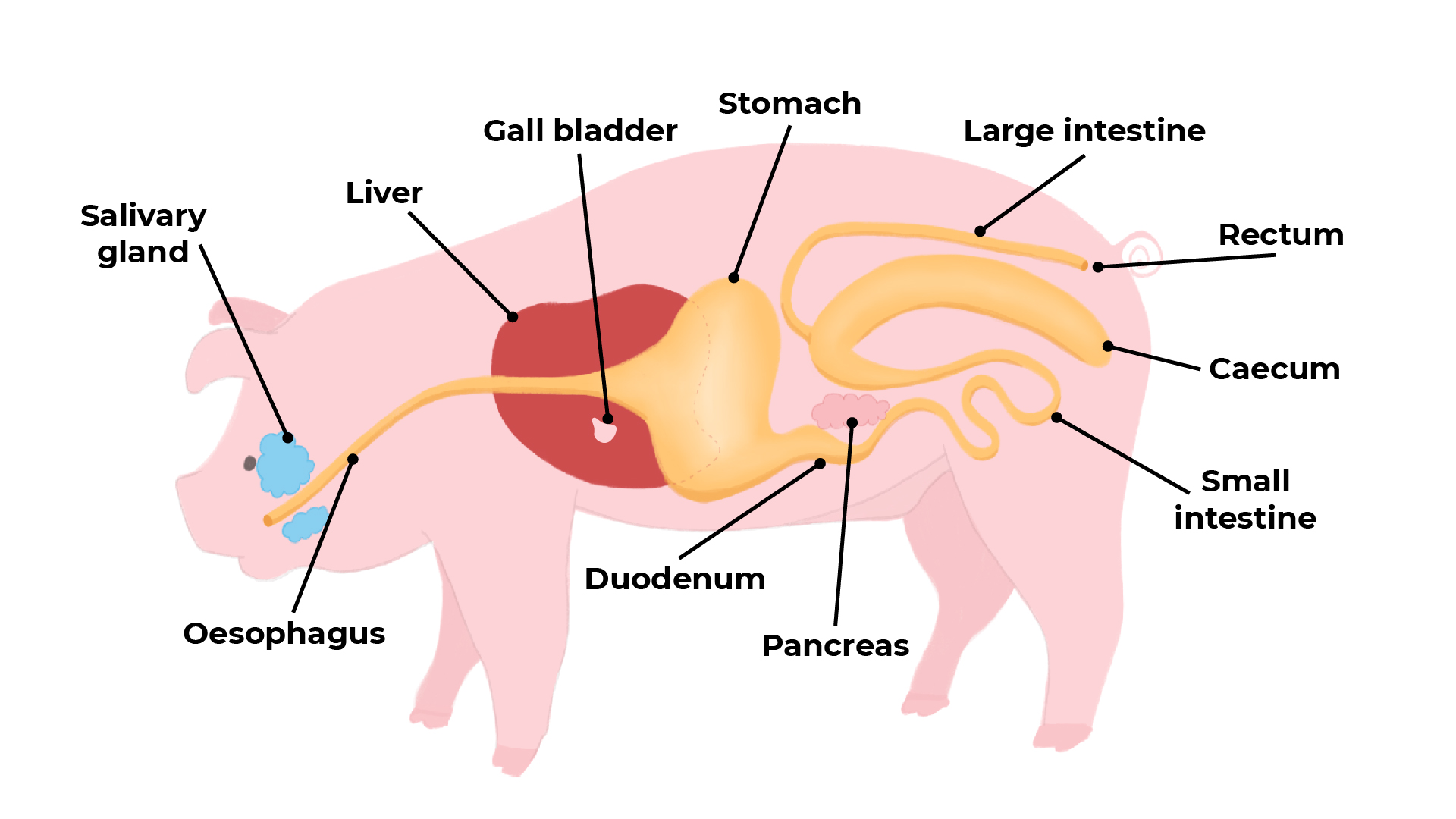
Starter
List as many parts of the digestive system as you can in one minute.
Decide which organ/part is the most important and explain why.
Use the web to complete the table.
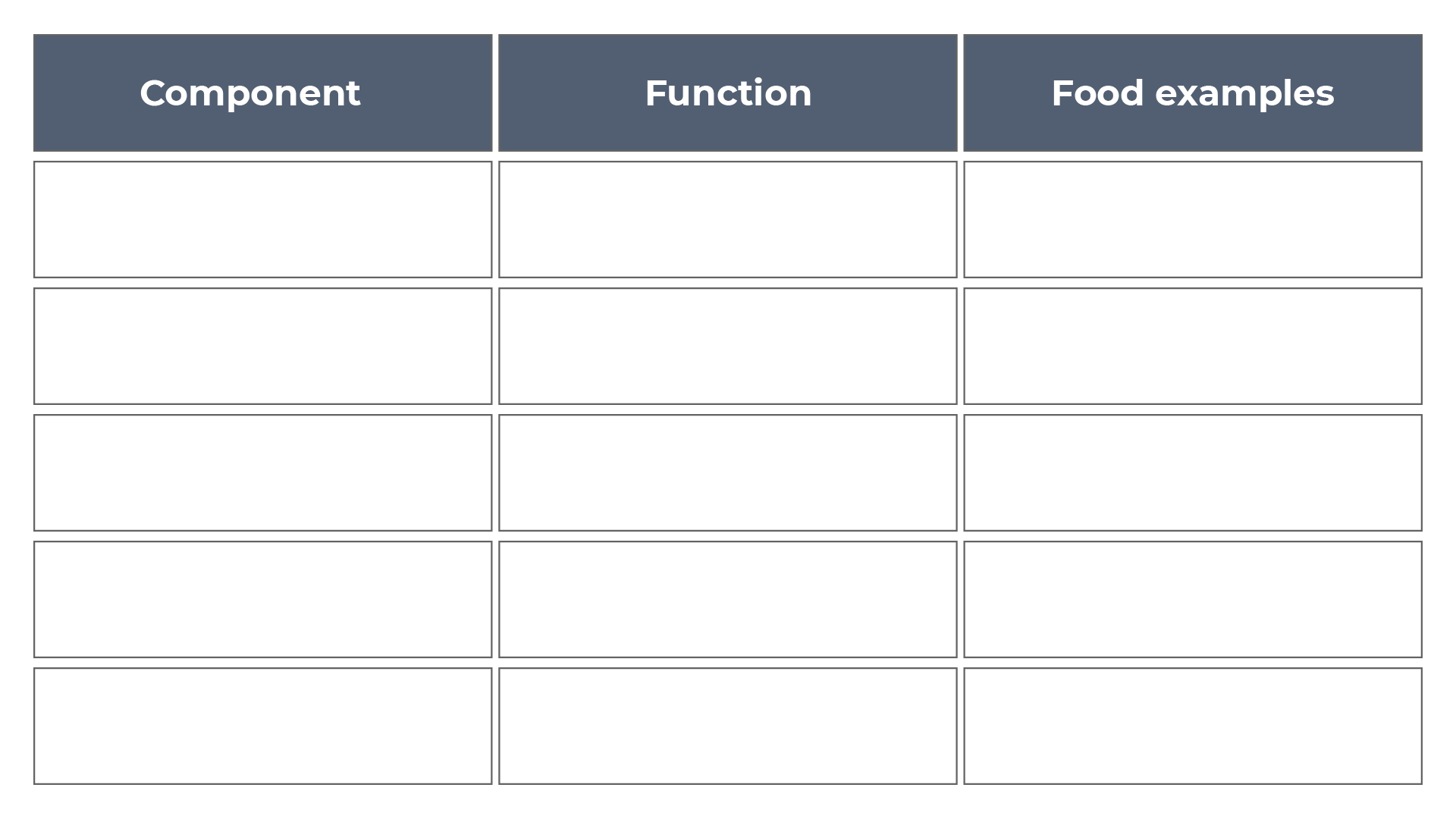
Ruminant

Definition of a ruminant
‘An animal that has a stomach with four complete cavities, and that characteristically regurgitates undigested food from the rumen, and masticates it when at rest' (Blood et al, 1999).
Blood, D.C. & Studdert, V.P. (1999) “Saunders Comprehensive Veterinary Dictionary: Second Edition” Harcourt Publishers Limited
Examples
- Sheep
- Goat
- Cattle
- Deer
- Giraffe
- Bison
- Elk
Oesophagus
- Connection between the pharynx and stomach
- Anatomically the same in all animals?
- Ruminants have the ability to Regurgitate food
- Also called Eructation
- Via a passive movement = reverse peristalsis
- Why is it essential for a ruminant to chew its cud several times?
Cranial Fermentors - Ruminants
They have four complex stomach structures:
- Rumen
- Reticulum
- Omasum
- Abomasum

Four-chambered stomach dissection
The Rumen
- Large fermentation vat
- Bacteria and microbes
- Rumen is lined with papillae
- Why?
- Microorganisms are capable of digesting cellulose and synthesising amino – acids as well as complex B vitamins
- Volatile fatty acid production = Energy

Reticulum – 2nd Compartment
- Reticulum has a lining with a small compartment similar to a honeycomb.
- Interacts with rumen in the mixing/compressing of undigested matter prior to regurgitation.
Capacity
- Cattle – 9 litres
- Sheep – 2¼ litres
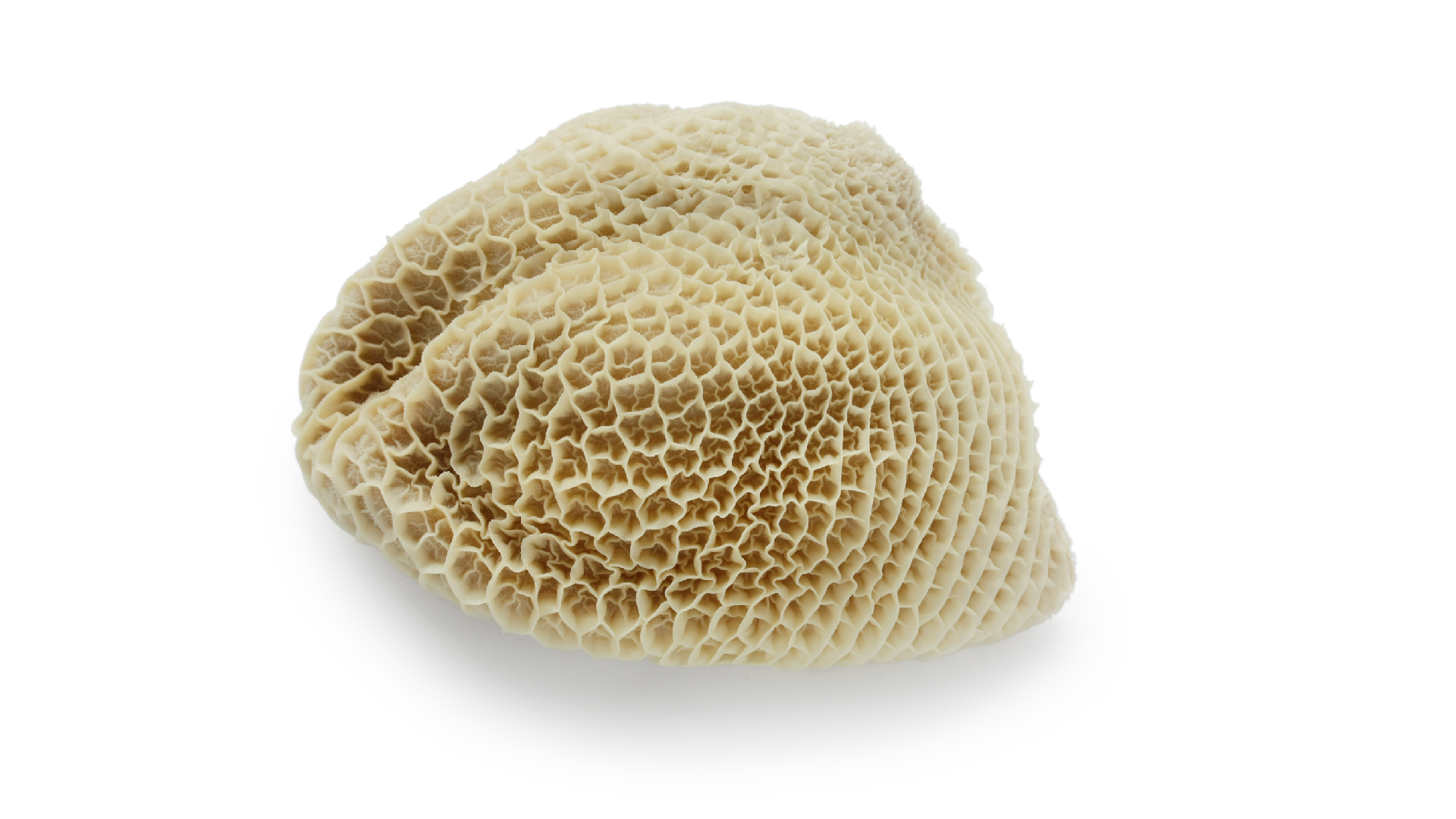
Omasum – 3rd Compartment
- Omasum has many folds.
- Aid in the grinding action of the food.
- Water reabsorbtion.
Capacity
- Cattle – 6 litres
- Sheep – 1 litre
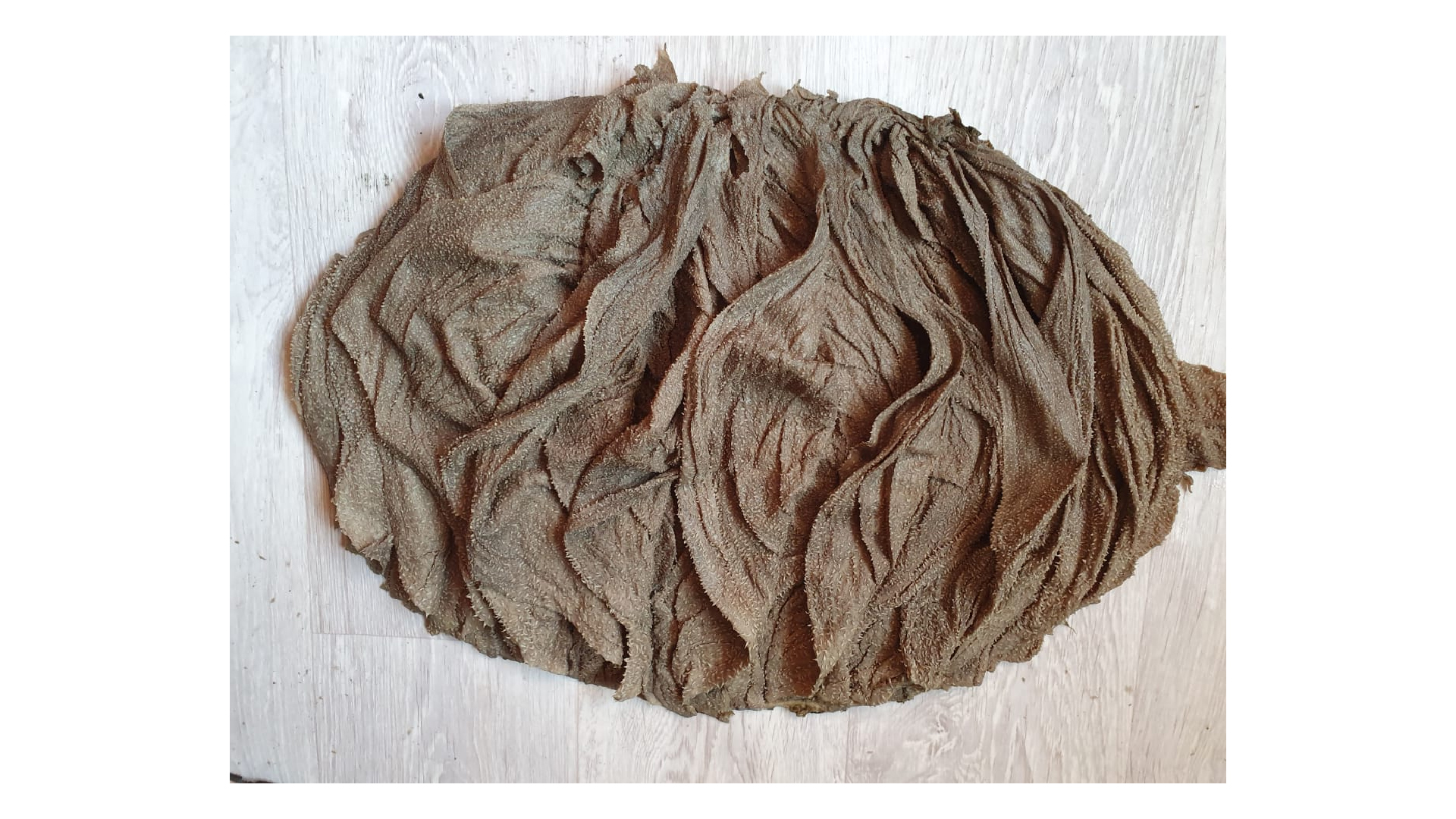
Abomasum – 4th Compartment
- The true stomach.
- Similar anatomy and physiology to the stomach of the monogastric animals.
- Digestion takes place.
Approximate Capacity
- Cattle – 16 litres
- Sheep – 3¼ litres

Abomasum
- Closely resembles the monogastric stomach anatomy and physiology:
- Folds = Rugae
- Glanduar epithelium
- Production of enzymes (pepsinogen)
- Production of HCl which activates the enzyme
- Contraction of muscles allows mixing of the contents
- Movement into duodenum via pyloric sphincter
Movement of ingesta through the ruminant’s stomach
Rumen capacity – 180 litres in cattle: 23 litres in sheep.
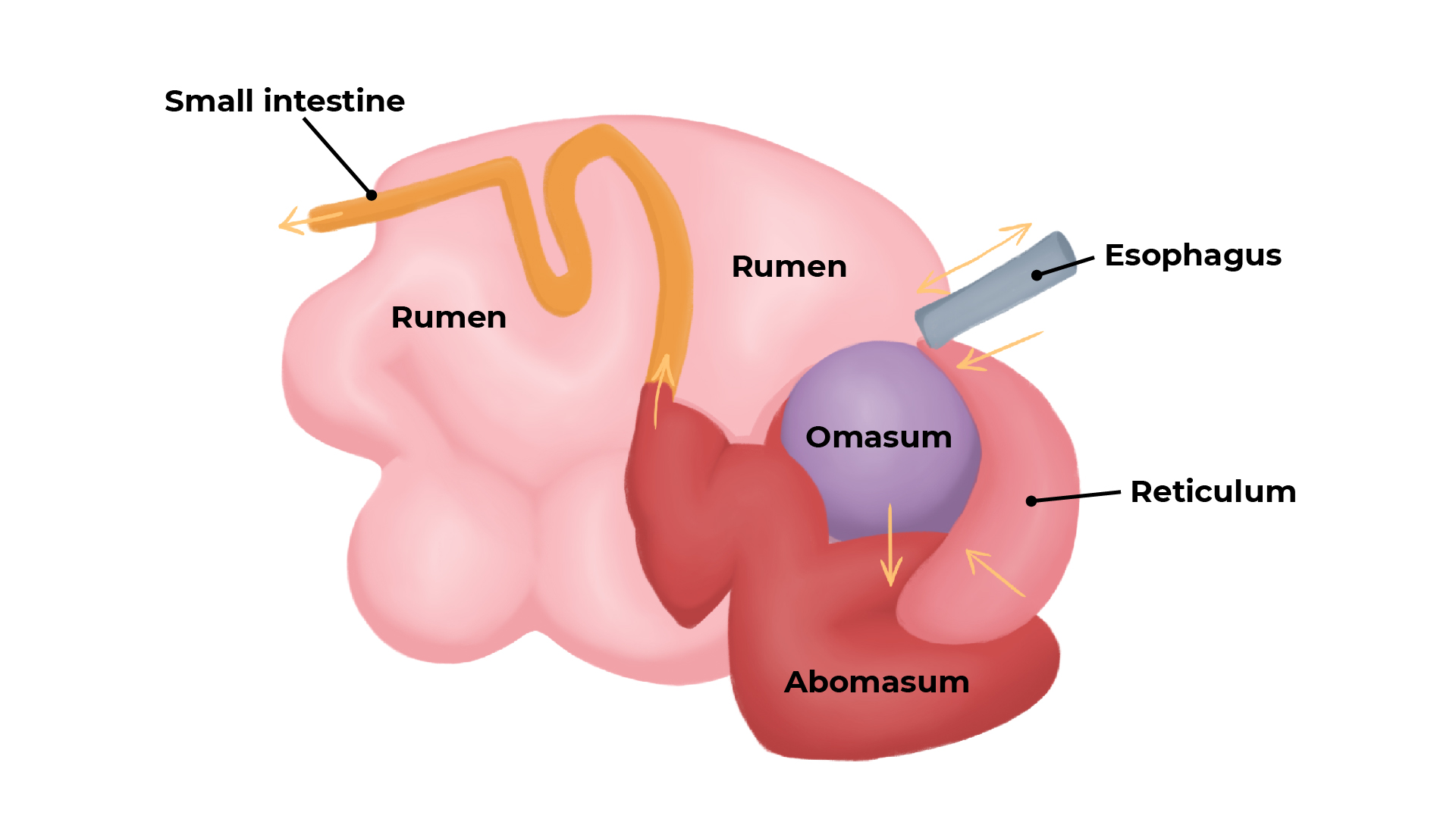
Rumen Development
- Ruminants are born with 4 stomachs.
- Rumen is immature in the neonate.
- Nutrition of neonate – milk.
- Milk digestion occurs in the abomasum.
- Milk bypasses the Rumen/reticulum.
Rumen Development
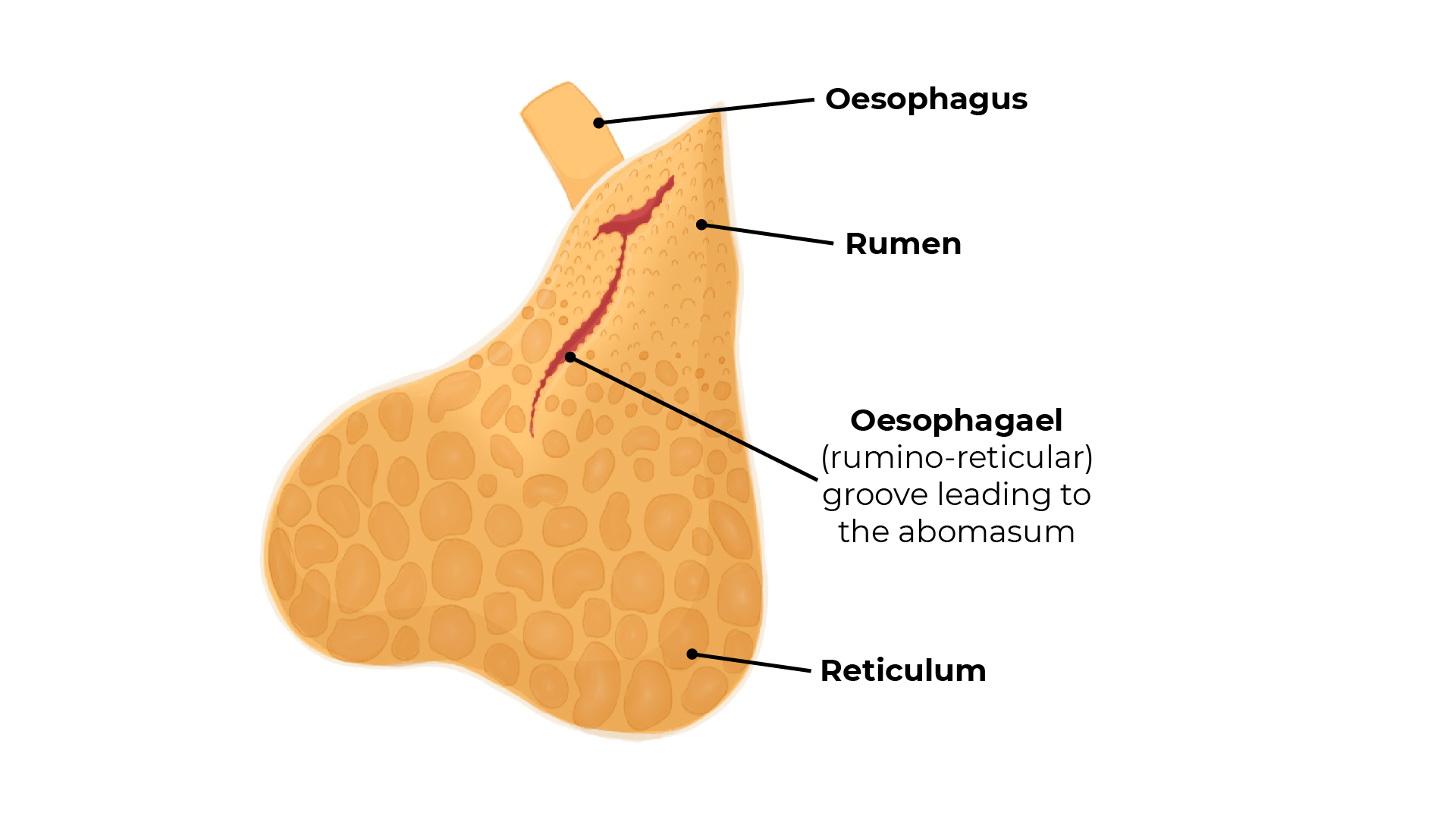
Physiology of the Ruminant digestive system
- Feed arrives in the rumen.
- Here it is mixed with micro-organisms, (bacteria, protozoa and certain fungi).
- Micro-organisms assist in the utilising and breakdown of cellulose and synthesising protein from non-protein nitrogen and certain vitamins.
- Regurgitation / chewing of cud.
Physiology of the Ruminant digestive system
- Feed moves from rumen – reticulum where it is further ground and mixed.
- Reticulum acts as a screening for FBs.
- Contraction of rumen/reticulum results in regurgitation – reverse peristalsis of mixed ingesta.
- Once ready the "feed" will move into the omasum.
Physiology of the Ruminant digestive system
- Omasum acts to remove 60-70% of the water before the "feed" passes into the abomasum (4th compartment).
- Once in the abomasum, digestive juices containing enzymes commence the breakdown of proteins and add moisture to the "feed" prior to its entry into the small intestine.
Check your learning
- What is the dietary intake of a ruminant?
- Why is it important that a ruminant has large molar teeth? Do they need canine teeth?
- Why does the ruminant eructate?
- Why is it important for the ruminant to have a well-developed stomach?
- What of the intestinal tract - are there any specialisations of this in the ruminant?
The Monogastric Digestive System
Digestion is the process of breaking large bits of food down into small molecules that are small enough to pass through the walls of the villi in the small intestine into the blood flow.

The Stomach
- Peptic cells (chief cells) – secrete the protein-digesting enzyme, pepsin, as an inactive precursor, pepsinogen. This prevents autolysis/self-digestion of stomach wall before food is present. Pepsin begins the breakdown of proteins to polypeptides.
- Stomach of suckling mammals produces the enzyme rennin to coagulate (solidify) milk, so it takes longer to travel down their digestive system, enabling them to get the nutrients from it.
The Stomach
- Oxyntic cells – secrete hydrochloric acid, which kills many bacteria as well as activating pepsin.
- Goblet cells – secrete mucous. This forms a protective layer on the stomach wall, preventing autolysis and also lubricates movement of food.
Bile
- Produced by liver.
- Stored in gall bladder.
- Passes into duodenum via bile duct.
- Contains bile salts important in emulsifying lipids.
- Emulsification is achieved by lowering the surface tension of the lipids – breaking large drops down to tiny droplets.
- Increases surface area for lipase action.
- Bile also contains mineral salts - to neutralise the acidic chime from stomach.

Pancreatic Juice
- Secreted from the pancreas.
Enters the small intestine through the pancreatic duct. It contains a number of different enzymes:
- Amylase – breaks down remaining starch into glucose.
- Lipase – splits fats/oils into fatty acids and glycerol.
- Pepsin – continues the breakdown of proteins into amino acids.
Villi – provide a huge surface area for absorption of food molecules into blood stream.
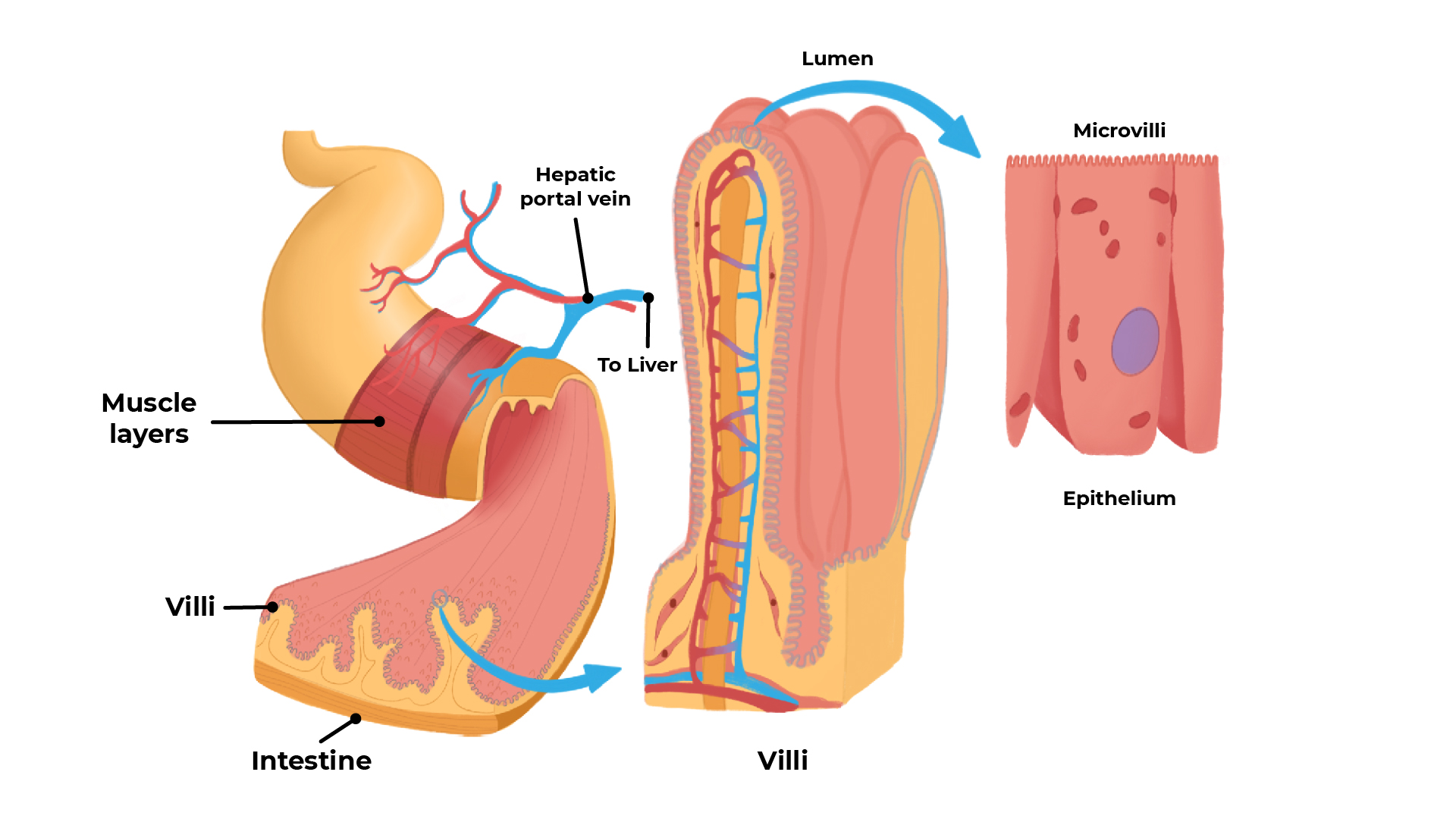

Large intestine
Any undigested food carries on down this tube to be egested as manure. Water is absorbed into the body across the wall of the large intestine to leave a semi-solid waste.
Large intestine
Monogastric (one stomach) digestive systems are found in omnivores like pigs (and humans).
Omnivores eat meat and plants, so they have canines to rip meat and premolars and molars to rip open plant cell walls. Omnivores also eat occasional meals, so have developed a large stomach.
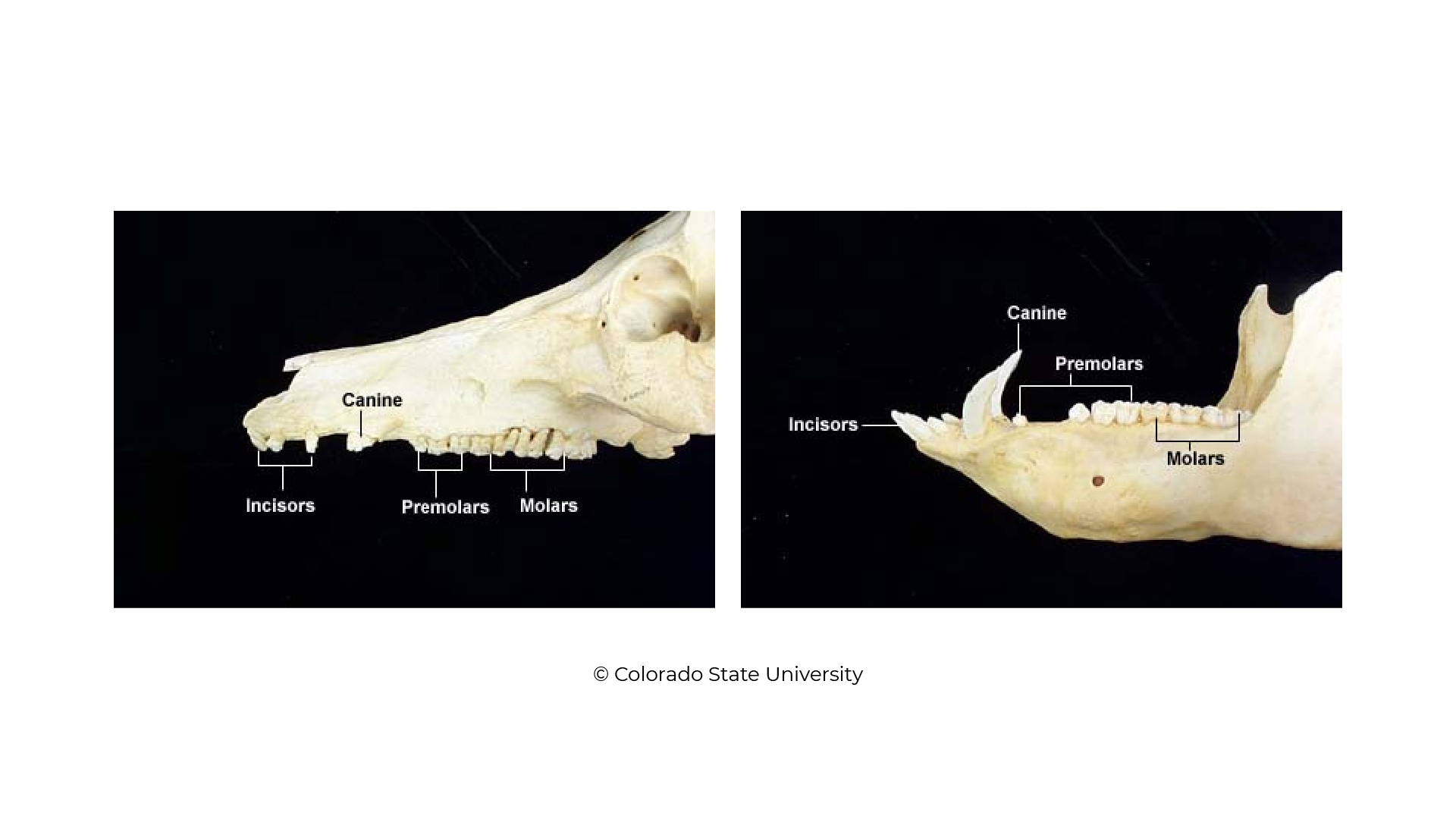
- List as many parts of the digestive system as you can in one minute.
- Decide which organ/part is the most important and explain why.
Avian digestive system
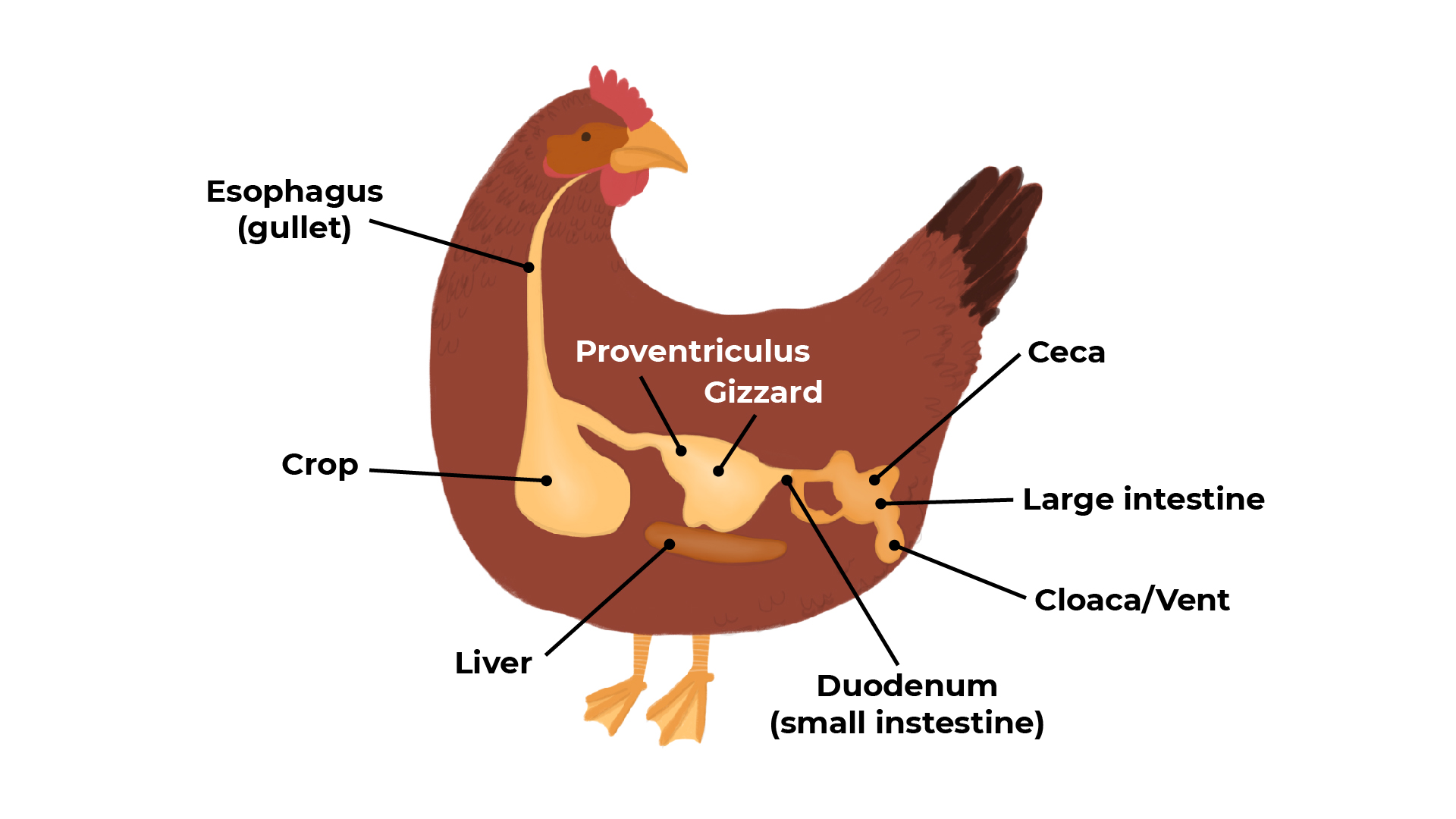

Read the information on the next slide, then create 10 questions for a peer to answer (remember you have to know the answers).
Food is picked up by the beak, then moved down the oesophagus into the crop. It is temporarily stored here. Next, the food reaches the proventriculus, the first part of the stomach. Digestive enzymes are added to the food, acid is added and mucous is secreted by the proventriculus. This helps to soften the food, which often consists of very hard grains.
The food passes on to the gizzard, the second part of the stomach. In the gizzard, with its tough muscular wall, breakdown of the food is completed with the help of sand and small stones swallowed by the bird. The food can be regurgitated back and fro between the proventriculus and the gizzard many times to improve digestion effectiveness. The food then passes on to the small intestine, where the pancreas and liver help absorption as they did in the other systems studied.
Birds have a short large intestine, where the small and large intestines meet there are two caeca. The large intestine and the caeca absorb water. The caeca also contain microbes that break down fibre. The waste is passed out through the cloaca after uric acid has been added to it.
Conclusion
At the end of this session you should be able to:
- Describe the Monogastric digestive system and explain the digestive processes that happen in it.
- Describe the Ruminant digestive system and explain the processes that occur.
- Describe the Avian digestive system and explain the processes that occur.